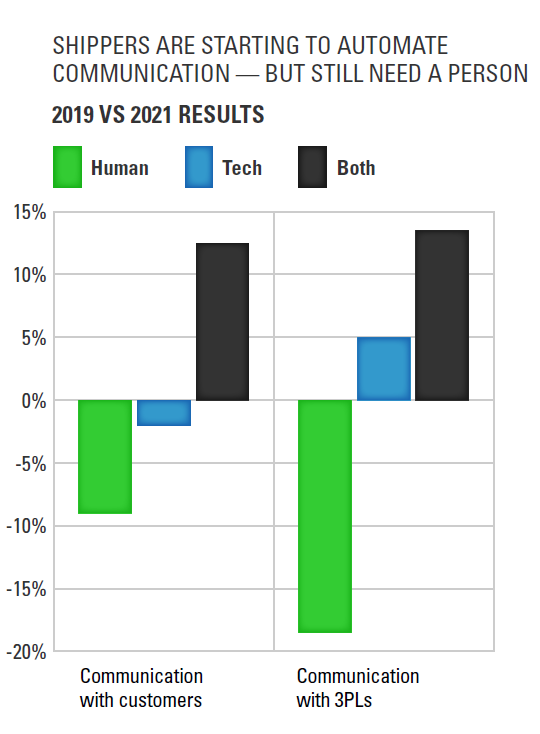Supply Chain Automation Research: How to Balance People & Technology in a Post-COVID World
Research Study Overview
Supply chain automation is not a new topic — the digital transformation of the logistics industry has been underway for years.
Over the past decade especially, shippers and carriers have rapidly integrated new technologies, creating a more efficient, connected industry.
Just when the pace of change felt like it could not get any faster, the outbreak of COVID-19 forced supply chain professionals into a whole new world of digital adoption.
Preview of survey insights — download the study now to get full access.
Technology is undeniably playing a bigger role than ever before, but the pandemic also highlighted the need for human expertise.
One thing is clear: to meet the ever-increasing demands for faster, cheaper shipping, companies must find the right balance between automation and people.
Get the Latest Trends in Logistics Automation
To better understand how shippers and carriers are integrating technology in their operations today, and where they are investing for the future, we conducted an in-depth research study in 2019.
In 2021, we revisited this crucial topic.
Is the Supply Chain Being Automated?
Though many functions across the supply chain are being automated, many are not, at least not completely.
In fact, our study saw a 3% decrease in overall preference towards automation compared to just two years ago. When asked if they thought people, technology or both produced the best results in supply chain operations, shippers and carriers were most likely to choose both.
Download the study to get the latest insights on how the last two years have changed their views, strategy and execution.
What You'll Learn from 850 Supply Chain Decision Makers:
- How COVID-19 changed supply chain automation
- What supply chain technology your peers are buying
- Where businesses use human expertise in logistics operations
- Biggest challenges for shippers and carriers
- Top 2021 logistics trends





